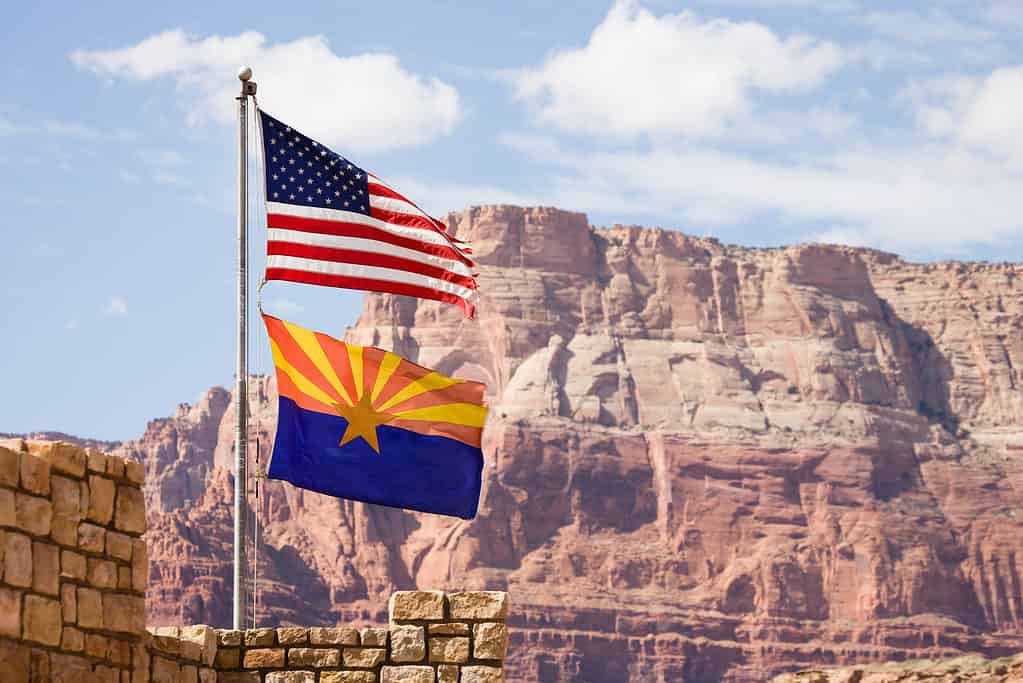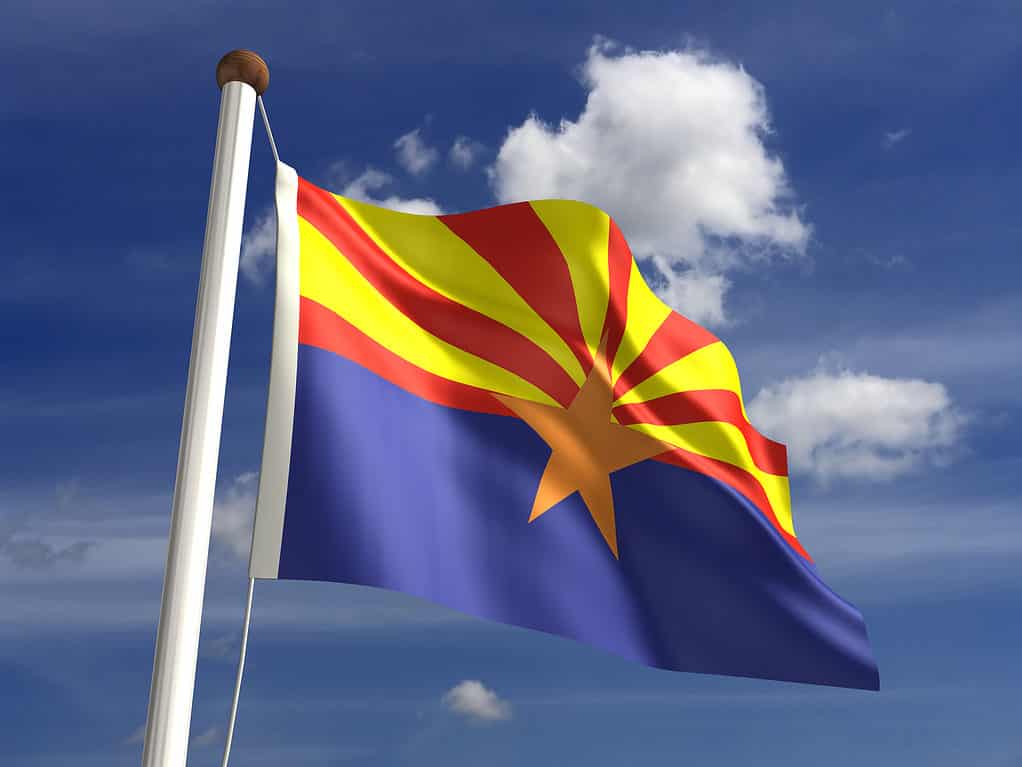Flags can come in many different colors and designs and represent many different things. However, one of the most brightly colored and unique flags is undoubtedly the flag of Arizona which depicts a setting sun. Incredibly, this flag was initially designed because an Arizona team was due to take part in a competition and needed a flag to represent them. Read on to learn what this stunning flag represents and when it was created!

©iStock.com/pmphoto
Founding of Arizona
The Spanish were the first European settlers in Arizona, but from 1822 Arizona was part of the state of Sonora in Mexico. However, in 1848 the area north of Gila River became part of the territory of New Mexico in the US following the Mexican – American War. Following this, the US purchased the area south of Gila River in 1854 along with the area that is now southwestern New Mexico.
During the American Civil War both sides laid claim to Arizona. The area was divided into north and south regions, with the southern area becoming Confederate Arizona in 1861. Although the Confederate control of the area had virtually ended by July 1862, the area was still represented in the Confederate States Congress until the war ended in 1865. Despite this, the rest of Arizona was separated from New Mexico to form its own Arizona Territory in 1863. This territory (along with the land from Confederate Arizona after 1865) remained until February 14, 1912 when it officially became the 48th state.
Prescott was the first capital of the Arizona Territory before it was changed to Tucson in 1867. However, it was switched back to Prescott in 1877. It was then changed for the last time to Phoenix which has remained the capital of Arizona since 1889.

©iStock.com/Gregory Clifford
Characteristics of Arizona
Arizona is the sixth largest state. It is well known for the Grand Canyon as well as its vast desert regions. The Sonoran Desert in particular stretches across the southern region of the state and is the hottest desert in the US. Although the desert regions largely have a hot climate, the northernmost region of the state and the mountains have a cooler climate. However, the temperatures in Arizona can still vary widely between the seasons, and even between day and night in some places. Additionally, much of the state is classed as being either arid or semi-arid and receives very little rainfall.
There is also a vast array of plant and animal species in the state. There are around 4,000 native plant species and 800 different animal species. Bison are the largest animals in Arizona. These huge animals are mainly found in two areas – the House Rock Wildlife Area and the Raymond Wildlife Area.
The state also has several venomous animals. These include gila monsters, black widow spiders, Arizona bark scorpions, and even giant desert centipedes. There are also thirteen different rattlesnake species in Arizona. The Mojave rattlesnake is generally classed as the most venomous, while the western diamondback is the largest.
Arizona is also is home to 27 Native American tribes, with reservations covering around one quarter of the state. In turn, Arizona also has one of the highest numbers of Native American speakers. However, the native languages are still in the minority, with Spanish being the second most commonly spoken language after English.

©iStock.com/Eric Mischke
History and Symbolism of the Flag of Arizona
Like most territories, Arizona did not initially have a flag of its own. However, this changed in 1910 when the Arizona Territory rifle team was due to compete in Ohio but needed a flag to represent them. To solve this problem Charles Harris, Adjutant General of the Arizona National Guard and captain of the team, quickly designed a flag for them to use.
There are few flags more colorful and distinctive than the flag of Arizona which is a tale of two halves. The bottom of the flag is solid blue – the same color as that of the United States flag. However, the top half consists of thirteen alternating red and yellow rays. Additionally, in the very center of the flag is a five-pointed gold star. Even though this flag was designed in a hurry a lot of thought went into it. This is clearly evident when we take a closer look at what the flag is depicting.
The thirteen alternating rays are representative of the thirteen original colonies of the US – Connecticut, Delaware, Georgia, Maryland, Massachusetts, New Hampshire, New Jersey, New York, North Carolina, South Carolina, Pennsylvania, Rhode Island, and Virginia. The red and yellow colors are the colors of the Spanish flags that were carried by Coronado the Spanish explorer on his expedition in 1540.
The gold star in the centre falling below the horizon of the rays represents a setting sun. This is because Arizona is a western state. The gold colour is also a nod to Arizona’s copper production. This is because the state is the largest producer of copper in the United States.
Arizona achieved statehood in 1912 and the flag was officially adopted as the state flag in 1917. With it’s unique design it ranks as one of the most popular North American flags.

©iStock.com/selensergen
Up Next
- Discover the Most Dangerous (Deadliest) Animals in Arizona
- Discover the 8 Largest Animals in Arizona, and Where You’ll Find Them
- 3 Countries with Animals on Their Flags, and Their Meaning
The post The Flag of Arizona: History, Meaning, and Symbolism appeared first on AZ Animals.
from Animal News, Facts, Rankings, and More! - AZ Animals https://ift.tt/xjW1ric